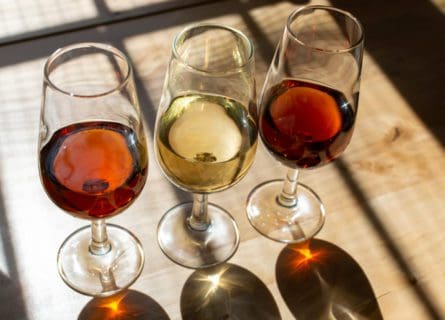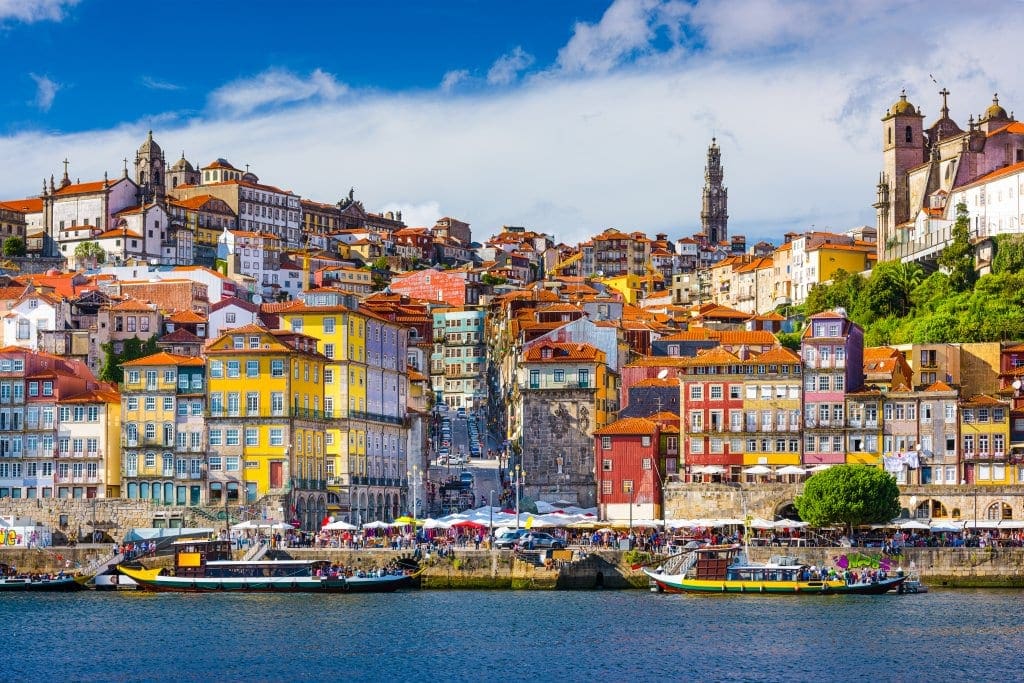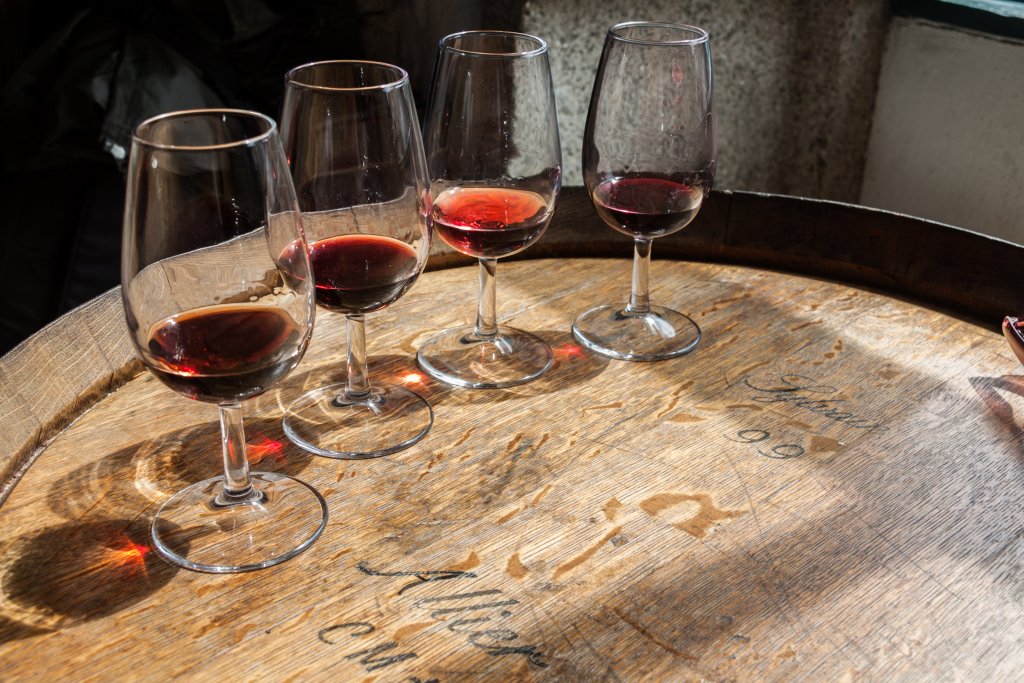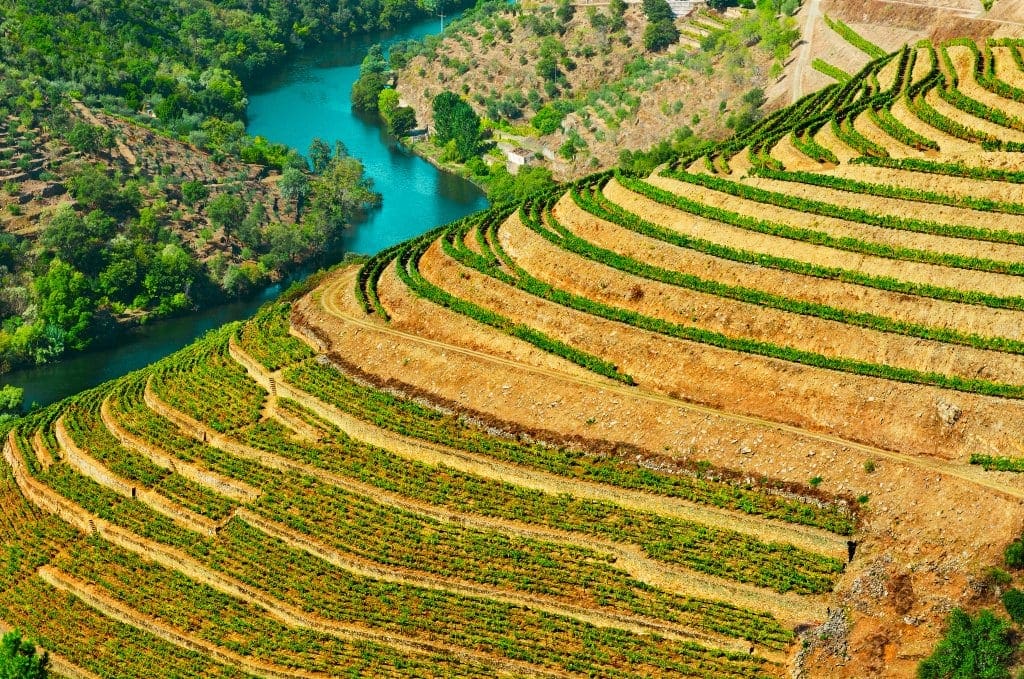
Spanish Dessert Wine: A Sweet Journey for Your Palate
December 23, 2019
For centuries, the heartland of Spanish dessert wine has been Andalucia. Sherry above all, but also the fortified wines of Montilla-Moriles and Malaga.
By: James lawrence / Last updated: August 15, 2024
Estimated reading time: 1 minute
Port wine traditionally comes from the Douro Valley in beautiful Northern Portugal. The wineries are called “Quintas,” they line the terraced hills rising up from the Douro River, east of Oporto, nearly reaching the border of Spain. The name “Port Wine” is protected by the Appellation system (Denomination of Origin), just as “Champagne” can only be placed on a bottle if it comes from the Champagne region of France. There are wine regions in the world producing Port-style wines (South Africa, California, and Australia in particular), but they cannot use the name.
This world-famous fortified wine first became popular when the English were at war with France during the Peninsular campaigns, and they stopped drinking French wines. This period in history gave the Portuguese a chance to launch their wines into the important British market. In the 18th century, however, the prices dropped due to market forces, and the British accused the Portuguese of “doctoring” their wines. In order to protect their interests, the port farmers created an appellation system called Companhia Geral dos Vinhos do Alto Douro. This group was established by the Royal Charter in 1756. It began as a method of ensuring quality to balance production and trade as well as equalizing prices.
In 1850 Phylloxera and oidium destroyed most of the vineyards in the previously demarcated regions. In 1865, a new trading administration began to open up the demarcation regions and expand to the Upper Douro. Before the end of the century, new methods of viticulture and vinification were implemented- planting techniques, regional selections for grafting, fertilizers, pest control use, and many more controlled wine-making procedures. With steep terraced hills, this region proved to be a rewarding challenge for British and Irish entrepreneurs in regard to wine production. In order to survive the long ocean travel, Brandy was added to the wines to give them a longer shelf life and resist temperature changes. Brandy is added to all port wines (20% of total volume), elongating the bottle’s shelf life and fermentation process. This technique grew a new category of fortified wines, and Port is among the most famous.

Dozens of grape varieties are permitted in Port wines (up to 80). Touriga Nacional, Tinta Barroca, Tinta Roriz, and Touriga Francesa are the most common varieties. Port requires long oak aging, and vintages are blended using the Solera method to keep a consistent taste. It is fortified and aged in the bottles. Port needs to be decanted and served in narrow wine glasses to keep the alcohol from overwhelming the flavors. It goes well with cheddar cheese and also with chocolate. It usually emits a black currant aroma with a peppery smokey aroma in its bouquet. Port has the capacity to age sublimely, with Vintage Ports only peaking after 50 years of aging.
There are five basic types of port wine. Whites tend to be simple multi-vintage blends that range from sweet to dry. The ruby and orangey ports are also multi-vintage blends that are sweet and can be aged. Dated ports are the quality orange wines that are marketed by their age. Harvest ports are not blended and are aged for at least 7 years. The final type is the vintage ports. These are made from a single harvest and are of very high quality.

Ruby Port represents the foundational and affordable style within the world of Port. Ruby is crafted from a blend of multiple harvests; this exquisite wine undergoes a maturation process lasting two to three years in either stainless steel or wooden casks before it is bottled. While the term “Ruby” may not be prominently displayed on the label, as many producers opt to showcase their house brand, it remains the quintessential expression of this cherished fortified wine.
Distinguished by its extended aging process, Tawny Port matures in casks for at least six years before reaching its optimal flavor profile. Unlike Ruby Port, which showcases a vibrant red hue, Tawny Port acquires its distinctive pale color—a captivating blend of amber-brown and tawny shades—through prolonged wood aging. While some Tawny Ports may incorporate a mixture of ruby and white ports, the finest examples owe their unique characteristics to this extended maturation period.
As Tawny Port matures, it undergoes oxidation, resulting in a drier flavor profile and imbues it with delightful nutty nuances. This natural transformation adds a layer of complexity and depth to the wine, making it a cherished choice for discerning palates.
Aged Tawny Ports represent the pinnacle of excellence within the Tawny category. These exceptional wines proudly display the average age of the meticulously selected blends that compose them. Available in 10, 20, 30, and 40-year variations, each with an associated increase in price, these aged tawnies offer an unparalleled drinking experience.
Among the options, a 20-year aged Tawny Port often provides the most captivating balance between quality and affordability. This carefully crafted blend is a testament to the artistry of the master blender, who skilfully combines high-quality wines to create a harmonious and refined expression.
Aged Tawny Ports embody the culmination of time, expertise, and exceptional winemaking. They are the result of a meticulous process that yields wines of unparalleled depth, complexity, and finesse.
Late Bottled Vintage, commonly referred to as LBV Port, is a wine produced from a vintage that did not meet the criteria to be classified as Vintage Port. These wines undergo a specific aging process, spending four to six years maturing in wooden casks before being meticulously fined and filtered before bottling. This careful treatment ensures that LBV Ports are ready to be enjoyed earlier than their Vintage Port counterparts.
One notable advantage of LBV Ports is their minimal sediment production. When pouring an LBV Port, you can expect a clear and clean drinking experience as they typically deposit little to no sediment in the bottle. This eliminates the need for decanting and allows for more immediate enjoyment of the wine.
LBV Ports provide an excellent alternative for those seeking the distinctive qualities of a Vintage Port but with a shorter maturation period. With their approachable nature and reduced need for aging, LBV Ports offer an accessible and satisfying drinking experience that can be relished without delay.
Renowned as the pinnacle of Port styles, Vintage Port represents the epitome of excellence. This highly sought-after wine, accounting for a mere 2% of total production, is a testament to winemakers’ artistry and dedication. Crafted from a single harvest of extraordinary quality, as indicated on the bottle, Vintage Port undergoes a unique aging process.
After two to three years of maturation in casks, Vintage Port is bottled and embarks on a transformative journey that spans many years. The wine matures gracefully within the bottle, acquiring complexity and nuance as time passes. A true testament to patience, a fine Vintage Port often necessitates 15 to 50 years of aging before it reaches its peak and is ready to be savored.
The allure of Vintage Port lies in its ability to captivate and evolve over an extended period. Each year, the wine develops its unique character, showcasing the remarkable qualities of the vintage from which it originates. Vintage Port embodies exceptional craftsmanship, embodying the potential for greatness that lies within each carefully selected harvest.

The Douro wine region is located in Northeast Portugal, in the Douro River basin. It is completely surrounded by mountains giving the area a perfect and characteristic soil and climate. The region stretches over 250 000 hectares of land. It is divided into three diverse sub-regions according to terroir- the Alto Douro, the Douro Superior, and the Cachao de Valeira canyon. After 1936, the Cachao de Valiera Canyon split into The Baico Corgo and Upper Corgo regions. The officials award each year licenses according to the location, soil content, variety, and age of the vines used for each vineyard. They are classified then from A to F, with A being the highest priced. This is called the Beneficio system. This system helps keep the quality and style of Port true to tradition and in high demand throughout the world. Port is a huge industry for Portugal (historically and now) and symbolizes Portugal to the rest of the world.
Guide to Douro Valley Wine Region: Read more
If you would like us to customize an exclusive luxury tour, contact us and let us know your travel plans. We offer luxury food and wine tours for private groups of a mininium two guests. In addition, all of our private, chauffeured tours are available year-round upon request.

